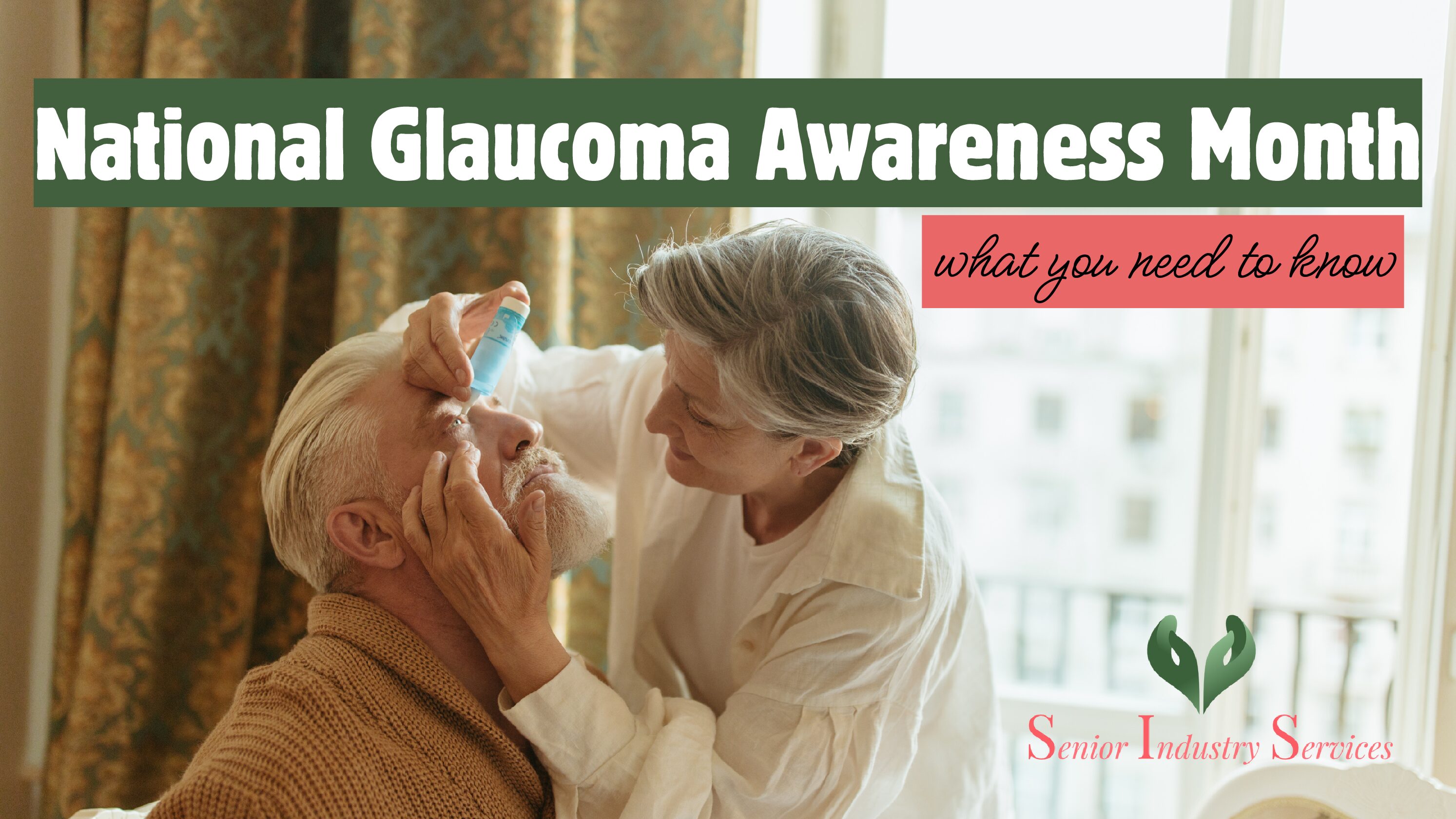To help ease into the new year, we thought we would talk about something important but not too heavy. You can check out our previous blog post if you’d like to see some realistic New Year’s resolutions. Today, we’ll be talking about National Glaucoma Awareness Month. This is an important health issue that affects millions of people, especially seniors. This condition can often be overlooked or not fully understood due to a lack of discussions surrounding the topic.
Glaucoma is a serious condition and is one of the leading causes of irreversible blindness. However, with early detection and proper care, you can prevent it from progressing. Today, we’ll share some essential information about glaucoma, how to recognize the risk factors and the importance of regular eye exams.
What is Glaucoma?
According to the U.S. Department of Health and Human Services, Glaucoma is a leading cause of vision loss and blindness in the United States.
Glaucoma refers to eye conditions that cause damage to the optic nerve, which is the part responsible for vision. It is often caused by an increase in eye pressure, though not everyone with glaucoma will experience high pressure. The damage to the optic nerve can lead to vision loss or even blindness if not properly managed.
Unfortunately, glaucoma usually doesn’t show symptoms until significant damage has been done, which is why it’s often referenced as a “silent thief of sight.”
When Glaucoma progresses, the symptoms become more evident, including vision changes, blurred vision, eye pain, or seeing halos around lights.
Why Early Detection Matters
Sadly, half of the people with glaucoma are unaware they have it. This is largely because there are no early symptoms associated with glaucoma. The only way to check for glaucoma is to get a comprehensive dilated eye exam with an eye doctor.
Since glaucoma develops gradually without noticeable symptoms, regular eye exams are the best way to catch it in its early stages. A simple dilated eye test can check for signs of increased eye pressure, optic nerve damage, and vision changes. It is recommended to get a comprehensive eye exam regularly every two or more years for people over the age of 40 or more often if they are at higher risk.
While there isn’t a cure for glaucoma, starting treatment as early as possible can help stop vision loss and the progression of the condition.
Treatment Options for Glaucoma
Some effective treatments are available to help manage the condition and prevent further damage. Depending on the type and severity of glaucoma, treatment options may include:
- Medications: Prescription eye drops to lower eye pressure and prevent optic nerve damage.
- Laser Surgery: In some cases, laser treatment can help reduce eye pressure.
- Traditional Surgery: If other treatments aren’t effective, surgical procedures may be considered to create new drainage channels for fluid in the eye.
Who is at Risk?
Anyone can get glaucoma, but some people are at higher risk, including people who:
- Are over the age of 60
- Are Black/African American and over age 40
- Are Asian American
- Are Hispanic/Latino
- Have a family history of glaucoma
Steps You Can Take To Care For Your Eyes:
- Schedule Regular Eye Exams
- Know Your Family History
- Live a Healthy Lifestyle
- Be Aware of Symptoms
The U.S. Department of Health and Human Services has a National Eye Health Education Program (NEHEP) that helps encourage everyone at higher risk for glaucoma to get a dilated eye exam. This is because it is the best and most effective way to protect your vision.
During National Glaucoma Awareness Month, let’s take a moment to focus on our eye health and make sure we’re taking the necessary steps to protect our vision. Early detection is key, and with the right care, you can maintain a high quality of life even if you are diagnosed with glaucoma. Make 2025 the year you prioritize your health—and encourage the seniors in your life to do the same.
Written for Senior Industry Services by Lauren Hope Bartling
References:
U.S. Department of Health and Human Services. (n.d.). Glaucoma awareness month. National Eye Institute. https://www.nei.nih.gov/learn-about-eye-health/outreach-resources/glaucoma-resources/glaucoma-awareness-month


